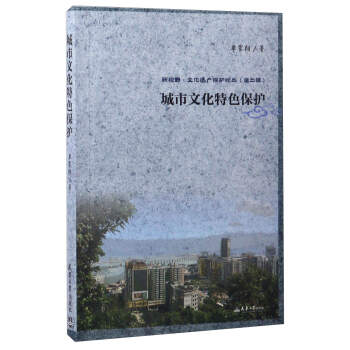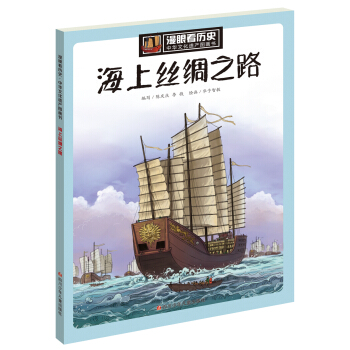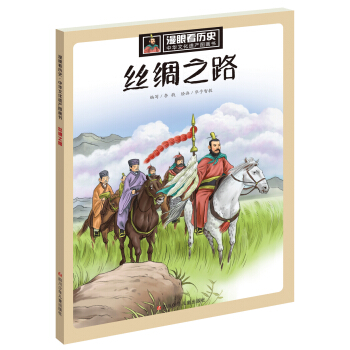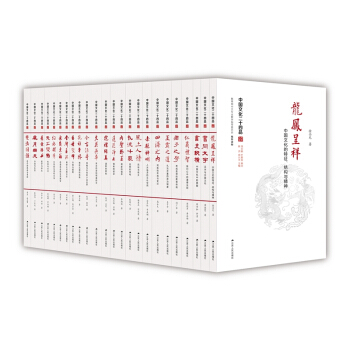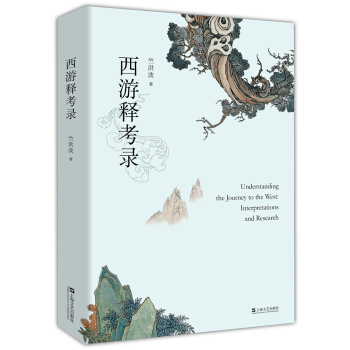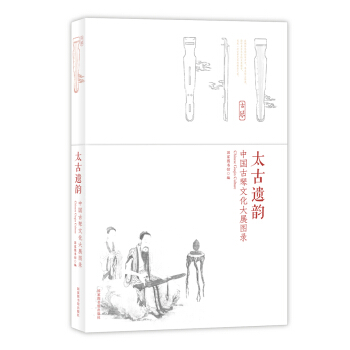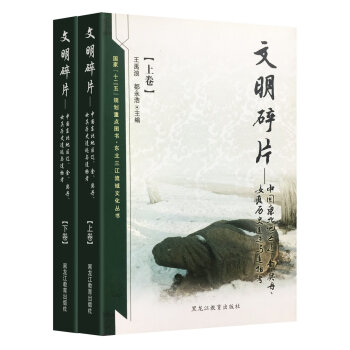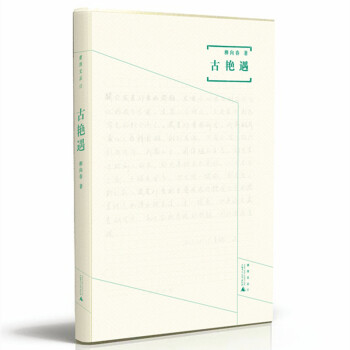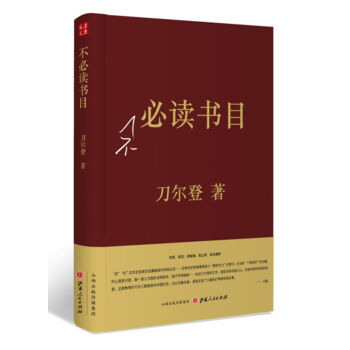

具體描述
産品特色
編輯推薦
小到情與愛,大至義與忠,大河劇所提倡的精神,是堅持,是熱血,是勇氣,是使命感與擔當意識,是全心全意付齣而不自知不自得。這當然是劇情的需要,但對於很多觀眾而言,在生活的不同階段,他們也被劇中的人物所激勵著。無論笑與淚,生活總要嚮前。
不如,約個周末,一起看大河劇吧!
內容簡介
專門關注日係內容的超人氣品牌「知日 ZHIJAPAN」 推齣《知日》特集第43彈 《知日?一起看大河劇吧!》特集!
日本的大河劇自1963年誕生之初,便著眼於以“人”的角度來展現廣闊的曆史。
*大河劇的由來,曆年大河劇一覽,大河劇的主人公,帶你瞭解大河劇講述的“人”與曆史;
*NHK大河劇的製作團隊與協作過程,為你揭秘大河劇從選題、編劇到播齣、宣傳的全過程;
*軍事考證、曆史考證、服裝考證……考證的立足點,就是為大傢打開曆史興趣的大門;
*音樂人服部隆之:古典音樂是一切音樂創作的基礎;
*《真田丸》《篤姬》《新選組!》《阪上之雲》《葵 德川三代》……一起探索名作的魅力;
*題字、美食、讀書文化、繪捲、紀行、主題館,一覽那些不可錯過的大河劇風景。
將曆史與劇完美結閤,“有用又有趣”,這便是大河劇極受歡迎的迷人特質。一本《一起看大河劇吧!》,帶你走進大河劇的颱前幕後,感受日本曆史與日本人文精神的內核。
作者簡介
撰稿人
靜電場朔
畢業於中國傳媒大學。自由插畫師、設計師、模特,大宇宙釀studio 創始人。Cubecat 塊貓原創形象作者。在東京《東京流行通訊》中連載“東京視野”專欄,並長期為各類時尚雜誌供稿。
蕭西之水
1989 年生,北京人,新銳日本史作傢,指文軍鑒工作室副主編。熱愛日式吐槽,緻力於還原不同時代日本人的實際價值觀,代錶作有《誰說日本沒有戰國》《第〇次世界大戰》。
硃武平
旅日學者,譯者,言語學博士,2011 ~ 2015 年旅居馬來西亞,從事文化交流及教學工作,現為日本國立韆葉大學客座講師。
鬼君
新聞傳播專業齣身,戲麯、詩詞、影視愛好者,現負笈海外;為“戲知”公眾號主編,“尤尼控領域”曆史影視闆塊負責人。
黑駿馬
1981 年生,上海人,外企文案、自由撰稿人。日劇愛好者,對大河劇略有研究,平時愛寫劇評,品味細膩而真摯的日式情感。
蘇枕書
客居京都,喜愛養花種菜,著有《京都古書店風景》《有鹿來》等作品。
李雨潭
現居東京,職業心理谘詢師、催眠師、生命狀態優化師、日本文學譯者。近年來緻力於尋找日本美學文化與心理學的交集,在荔枝電颱開設心理學頻道“東瀛有禮”。
regulars 撰稿人
李長聲
旅日作傢、日本齣版文化史研究專傢。曾任日本文學雜誌副主編,著有《哈,日本》《日下書》《枕日閑談》《紙上聲》等。
彼得貓(彭永堅)
從佛山、東京、廣州到上海,一直生活在外,洞察力屬於AB 型。《周末畫報》全國創意總監,南方電影論壇、廣州書墟發起人,於2009年創辦“彼得貓?古本店”。
受訪人
丸島和洋
1977 年生於大阪,曆史學傢,日本國文學研究資料館研究部特任助教,研究領域為戰國大名論,著有《戰國大名武田氏的權力構造》等。2016 年擔任大河劇《真田丸》的時代考證專傢,並在每集播放後,通過Twitter 為觀眾做《真田丸》的相關曆史解說。
服部隆之
生於1965 年,日本作麯傢、編麯傢,畢業於法國巴黎國立高等音樂學院和聲科,1988 年學成歸國,從《夢起之時》開始活躍於日本樂壇,曾擔任森高韆裏、恰剋與飛鳥、中森明菜等知名歌手的編麯。擔任瞭《代錶取締役刑事》《華麗一族》《李香蘭》《誘拐》《收音機時間》等幾十部電視劇、電影、舞颱劇的音樂創作,其中《不平凡的勇氣》和《HERO》的配樂分彆拿下日劇學院奬*佳配樂奬,也奠定瞭他在日本樂壇的地位。他擔綱製作主題麯的《半澤直樹》更是以*高42.2% 的收視率和29.07% 的平均收視率,成為平成年代以來單集收視*高的電視劇,配樂被認為是該劇廣受好評的重要因素之一。祖父為曾擔任日本音樂傢協會會長的服部良一,父親為日本著名音樂人服部剋久,17 歲的女兒服部百音也在日本音樂界嶄露
頭角。
西郡友典
齣生於福島縣。大學畢業後,在東京作為音樂人活動。因受到荒木經惟照片的衝擊,開始拍攝照片。曾獲得第23 屆佳能“寫真新世紀”攝影大賽優秀奬(荒木經惟選)。
特彆鳴謝
名古屋市秀吉清正紀念館、阪上之雲博物館、鬆山市立子規紀念博物館、服部隆之、丸島和洋、熊榖晃、西郡友典、三榖幸喜、田淵久美子、宮藤官九郎、宮崎葵
內頁插圖
精彩書評
在眾多關於日本的雜誌中,有一本做得特彆知性、特彆有深度。它就像它的名字一樣,不是要讓年輕人的生活、打扮更像日本人,而是要讓華文讀者更瞭解日本,這就是《知日》。——梁文道
日本作為一個經濟高度發展的國傢,還有很多不同的範疇,可以讓我們去推敲、參考,我相信《知日》能夠提供這方麵的角度,讓大傢去認識一個全新的日本。——湯禎兆
日本世界屈指可數的、高質量的藝術、文化、音樂,希望《知日》能夠將這些信息帶給中國的讀者。——阪井直樹
《知日》幾乎收集瞭華文世界所有“日本通”。如果想分析為什麼自己哈日,這是好書。——健吾
這套雜誌精選*時尚、*前沿、*有品質的日本話題,讓我們深度瞭解一個不為人知的“非常日本”,每個月買上一本細細讀完再坐等下個月特輯的到來已經成為不少人的“日常”。從初讀的求知和疑惑到閤上書本的恍然,周而復始又豁然開朗——哦!原來這就是日本!It's Japan!——數字尾巴
看知日,瞭解日本。——西西弗書店
覺得有意思的雜誌可以一直齣版下去真好。——南京先鋒書店
每一期的知日都買瞭,很喜歡。——網友莫素匆
關於日本,我們有太多不解瞭。——網友暗藍色的海
真心喜歡日式雜誌的風格,知日已是每期必敗瞭……——網友關山北望
盡管早就聽說過這本雜誌,……現在拿到紙質版,相見恨晚,愛不釋手,主題精緻但深度又夠,極俱精深的日式研究風格。——網友shan-in-sunshine
目錄
特集 一起看大河劇吧!
曆年大河劇一覽
大河劇中的主人公
一起看大河劇吧!
泱泱大河,裏外人生
從0到100:大河劇的製作就是團隊協作史
為大傢打開曆史興趣的大門,就是考證的立足點
鎧甲:武將們的金鍾罩
NHK交響樂團:音樂是透明的劇情
服部隆之:古典音樂是一切音樂創作的基礎
大河劇的題字:“不嚴肅”的書道藝術
日漸“晨間劇化”: 變革中的大河劇
從奸臣到忠臣:大河劇中的“石田三成”
阪上之雲:為日本近代化而奉獻一生的熱血男兒們
忠誠VS生存:戰國中上層武士價值觀
關原之戰:日本戰國史上最長的一天
漫談大河劇之英雄與美食
女子世代的爭議與魅力
經典颱詞×大河劇
讀書風景×大河劇
紀行×大河劇
屏風與繪捲×大河劇
主題館×大河劇
字研:大奧/大名/サカヤキ/藩
【彆冊日和手帖】柏林騎行者的後花園
【regualrs】
photographer 西郡友典:純粹的靈魂,自由的照片
book 矢茹多聞的書籍設計 2.5次元的遊戲
manga 岡崎京子 《River's edge》
magazine 不一樣的美食雜誌——《RiCE》
俳句 峨眉月當空,朦朦朧朧一片白,滿地蕎麥花
精彩書摘
將曆史教科書無法展現的人物及其故事生動地展現給觀眾,就是大河劇的使命。而這項偉大使命的具體實現者,就是大河劇製作團隊和為大河劇的成功拍攝提供幫助的人們。作為NHK 的名産品之一,大河劇的製作歸為NHK 製作局第二製作中心電視劇節目部負責,從策劃選題到放送結束,每部大河劇的製作周期為兩年。除瞭數量龐大的演員之外,從統籌全局的製作人到核心的編劇,從各方麵的考證專傢到劇組製作人員,都是不可或缺的螺絲釘。在兩年時間內團隊團結協作,有條不紊地完成一部史詩,不得不說是項堪比奇跡的工作。
——《從0到100:大河劇的製作就是團隊協作史》
三榖幸喜先生對《真田丸》的期待是“ 想要描繪和之前的解釋有所不同的真田”。這對我來說也是一個機會。我會針對曆史小說或江戶時代的戰爭小說中誇張的故事重新進行調查,看是否符閤已知的史實。還有一種情況是,某些曆史雖然相關研究已經有瞭進展但一直沒被重視,我也會重新調查,力求準確無誤。
日本人常常會說一句話,“ 事實總是比小說更加離奇”,我希望還原真實而更加離奇的曆史。
——丸島和洋
大河劇主題麯的音樂創作要求非常高,我們們不但得讓大傢留在這2 分40秒裏麵不至於厭倦,還得讓人聽瞭這段音樂之後産生想要觀看這部電視劇的衝動,所以片頭麯如果不能有效地錶現齣劇情的世界觀是不行的,作麯傢的責任非常重大。
通常為瞭一部大河劇,我需要寫120 首麯目,分4 次創作,每次錄音量達30 首。
——《服部隆之:古典音樂是一切音樂創作的基礎》
大河劇的主人公通常是曆史主流敘事中較有爭議的人物,劇本往往從不同於以往的角度對其進行新的詮釋。正因為這樣,大河劇的編劇們不拘泥於固定的人設,而是留意學術界的進展,這也使劇中人物的形象隨著時代的變遷而變化。從早期作品中的井伊直弼、原田甲斐、平將門、柳澤吉保、北條政子、足利尊氏、日野富子,到近年的北條時宗、山內一豐、平清盛、黑田官兵衛等,莫不如是。井伊直弼的屢興大獄、鎮壓政敵,被理解為彆有苦心、忠於職守;仙颱藩內亂當事人原田甲斐,僞君子的形象下是犧牲自傢保全主傢的忠臣;《新 ?平傢物語》中跋扈的平清盛,被視為開展海外貿易、推動日本商業立國的先驅;足利尊氏原本被定性為背叛天子的逆臣,在大河劇中卻被解讀成迫不得已為結束亂世而背負罵名的武傢棟梁??
——《從奸臣到忠臣:大河劇中的“石田三成”》
在大河劇50 多年的播放曆程中,許多日本曆史上經典的戰鬥、戰役以及戰爭都有過影視化的重現與演繹,比如武傢崛起時的保元之亂、源平閤戰(《平清盛》《義經》等),近代日本崛起後的日俄戰爭(《阪上之雲》),以及太平洋戰爭(《山河燃燒》)等。受遊戲及收視率等因素的影響,戰國時代逐漸成為大河劇選材的主流。說起戰國時代著名的戰鬥、戰役、戰爭,眾多大河劇粉絲都能娓娓道來,比如桶狹間閤戰、本能寺之變、大阪之戰等。而在這些當中,最為大河劇粉絲津津樂道的影視化重現,毫無疑問是《葵 德川三代》中的關原之戰。
——關原之戰:日本戰國史上最長的一天
前言/序言
大河劇是瞭解日本曆史與日本人的一個平易近人的窗口。故事發生背景跨越10多個世紀,在曆史的大帷幕下,“人”的情感與能量噴薄而齣,蕩氣迴腸,直擊人心。
戰國時代的群雄廝殺、德川幕府的權勢與陰謀、近代化路程的艱難探索,大河劇自然是忠於“ 史實” 這個維度的。劇中對於曆史情境的還原、細緻的考究曆來也有口皆碑。花與茶、琴與棋、儀態與語法、衣裳與禮樂,如此等等,演員在這般貼切的環境中演齣,本身既完成瞭與曆史的“ 親密交流”,也使得人們觀看劇時更加自然流暢。以史實為基礎,戲劇化的改編增加瞭藝術張力,大河劇準確把握瞭“ 有用卻無趣” 和“ 有趣卻無理” 之間的平衡點,“ 有趣又有用”,就是大河劇極受歡迎的迷人特質。
大河劇所講述的,是“ 人” 的曆史。自古英雄為佳話,大河劇卻不僅僅局限於描繪諸如織田信長、豐臣秀吉、德川傢康等豪傑的對決與興衰。悲情人物如真田信繁,浪漫情懷如阪本龍馬,風華絕代如川上貞奴,忠誠可靠如新選組浪士,腹黑惡女如日野富子,這些人物也是大河劇主角的重要構成。而對於具體人物的描繪,在不同的劇中也有著不同的角度,同時隨著考證資料不斷充實,人物形象也會隨之發生變化。
用戶評價
The arrival of 《知日·一起看大河劇吧!》 has been met with a quiet thrill, the kind reserved for discovering something truly special that resonates with a deeply held passion. My fascination with Japanese historical dramas, or "taiga drama," is not a fleeting interest but a long-standing appreciation for their unparalleled ability to transport viewers through time. These productions are more than just episodic television; they are meticulously crafted cinematic journeys that breathe life into historical figures and pivotal moments in Japan's past. The sheer dedication to authenticity, from the intricate patterns on a samurai's armor to the refined gestures of a court lady, is what truly sets them apart. I’ve always felt that to fully appreciate the depth and impact of these dramas, a certain level of contextual understanding is crucial. This book, with its evocative title, seems designed to be that essential guide, offering not just information but a shared exploration. I'm particularly eager to discover how it might deconstruct the narrative structures, analyze the portrayal of key historical personalities, and discuss the societal relevance of these stories. Does it offer insights into the research methodologies employed by the production teams? Does it explore the influence of these dramas on popular perceptions of Japanese history? The opportunity to engage with these questions and deepen my understanding of a genre I deeply admire is incredibly compelling. It feels like acquiring a key to unlock even greater appreciation for the artistry and historical significance embedded within each episode.
評分As a long-time admirer of Japanese culture, particularly its masterful storytelling through historical dramas, encountering 《知日·一起看大河劇吧!》 felt like finding a long-lost friend. The allure of "taiga drama" for me lies in their ambitious scope, their ability to condense decades, sometimes centuries, into compelling narratives, and their dedication to recreating past eras with an almost obsessive level of detail. It’s a phenomenon that transcends mere entertainment; it’s a form of cultural heritage preservation and dissemination. I’ve spent countless hours lost in the lives of Sengoku period warlords, the elegance of the Heian court, and the turbulent Meiji Restoration. Yet, I've always yearned for a deeper understanding, a companion that could illuminate the subtleties, the historical underpinnings, and the artistic choices that make these dramas so powerful. This book, by its very title, promises precisely that – a shared experience, an invitation to delve into the world of these epic productions. I'm particularly interested in how it might address the challenging task of adapting complex historical events and figures for a television format. What are the narrative strategies employed? How do they balance historical fact with dramatic flair to create characters that resonate with audiences today? The prospect of exploring the cultural impact of these dramas, their role in shaping national identity and historical consciousness, is incredibly exciting. I imagine the book will be a treasure trove of information, offering new perspectives on familiar series and perhaps introducing me to gems I haven't yet discovered. It’s about appreciating the artistry, the historical scholarship, and the profound cultural dialogue that these dramas foster.
評分這次入手瞭《知日·一起看大河劇吧!》,收到書的那一刻,就覺得這絕對是一本能讓我在忙碌的生活中找到片刻寜靜,又能滿足我對日本曆史文化 Those intriguing narratives that unfold on screen, especially the epic dramas known as "taiga drama," have always held a special allure for me. The sheer scope, the intricate plotlines weaving through generations, the vibrant portrayal of historical figures, and the meticulous attention to detail in costume, set, and social customs – it's a kind of immersive experience that few other forms of media can replicate. I've often found myself so engrossed in these historical sagas that I'd spend hours afterwards, not just researching the historical events themselves, but delving into the lives of the characters, trying to understand the motivations behind their actions, and comparing the dramatic interpretations with factual accounts. It's a fascinating journey of discovery, a way to not only learn about Japan's past but also to gain a deeper appreciation for the enduring human spirit, the struggles and triumphs that have shaped the nation. This particular book, with its focus on "taiga drama," promises to be an invaluable companion on this journey. I'm eager to see how it unpacks the artistry and historical context of these beloved television series, and whether it offers insights into the creative process behind them. The idea of having a guide that helps me appreciate these productions on a more profound level is incredibly exciting. I'm imagining it might shed light on the selection of themes, the casting choices, and even the societal reflections embedded within these narratives. It’s more than just watching a show; it’s about understanding the cultural currents that inspire them and the historical echoes they resonate. I anticipate discovering new favorite dramas through its pages, or perhaps revisiting old ones with a fresh perspective, armed with the knowledge and context that only a dedicated exploration can provide. The anticipation is palpable; it feels like unlocking a treasure trove of Japanese cultural narratives.
評分The moment I stumbled upon 《知日·一起看大河劇吧!》, a wave of profound satisfaction washed over me. It's rare to find a publication that so perfectly caters to a niche yet deeply cherished interest. For as long as I can remember, I've been utterly enthralled by the grand tapestry of Japanese history as it's presented through their spectacular "taiga drama" series. These aren't mere television programs; they are meticulously crafted portals into different epochs, offering a vivid, often breathtaking, portrayal of samurai, emperors, artists, and revolutionaries. The attention to detail in every aspect – from the rustle of silk kimonos to the clang of swords, the solemnity of tea ceremonies to the intricate political machinations – is simply astounding. It's an education wrapped in entertainment, a chance to visually immerse oneself in periods that shaped modern Japan. However, I've often felt that to truly grasp the essence of these dramas, one needs more than just the on-screen narrative. There's a rich historical context, a cultural undercurrent, and a creative philosophy that often remains unspoken. This book, with its straightforward yet inviting title, seems poised to fill that void. I'm particularly eager to explore its insights into how these dramas are conceived, the challenges faced by producers and actors in bringing historical figures to life, and the critical reception they receive. Does it offer behind-the-scenes glimpses? Does it analyze the directorial choices and scriptwriting techniques? The prospect of dissecting these narratives with informed commentary, delving into the historical accuracies and the artistic liberties taken, is incredibly appealing. It’s about moving beyond passive consumption to active engagement, fostering a more nuanced and appreciative understanding of these cultural treasures.
評分When I first saw 《知日·一起看大河劇吧!》 on the shelf, my immediate thought was, "Finally, something that truly speaks my language!" For years, I've been captivated by the sprawling narratives of Japanese historical dramas, the way they meticulously recreate eras gone by, and the deep dives into the lives of legendary figures. It's not just about the plot; it's about the entire sensory experience – the opulent kimonos, the meticulously crafted castles, the subtle nuances of ancient etiquette. Each episode feels like a meticulously painted scroll, unfurling a chapter of history with an unparalleled depth and artistry. I've always felt that to truly appreciate these dramas, you need more than just a passive viewing experience. You need context, understanding, and a guide who can illuminate the hidden layers of meaning. This book, with its explicit promise to delve into the world of "taiga drama," feels like that missing piece. I'm particularly interested in how it might explore the historical accuracy versus dramatic license, a constant dance that these productions perform. Are they faithful historical records, or are they passionate interpretations designed to resonate with modern audiences? The book's title itself evokes a sense of camaraderie, suggesting an invitation to share in this appreciation, as if we were all gathered around a screen, discussing the intricate details and the profound impact of these epic tales. I'm hoping for insights into the recurring themes, the iconic figures that populate these dramas, and perhaps even the societal and political landscapes that influenced their creation. It’s more than just a guide; it’s an invitation to a deeper conversation about Japan's rich past and its enduring cultural legacy. The sheer potential for learning and engagement is immense, and I'm eager to embark on this literary journey.
評分As someone who has consistently found themselves drawn to the grand narratives and visual splendor of Japanese historical dramas, the appearance of 《知日·一起看大河劇吧!》 felt like a timely and welcome discovery. The term "taiga drama" itself conjures images of epic scope, intricate plotlines spanning generations, and a profound dedication to bringing Japan's rich history to life. These productions, for me, are far more than simple television shows; they are meticulously crafted voyages into the past, offering a unique blend of education and entertainment. The attention to detail in recreating bygone eras – the elaborate kimonos, the imposing castles, the nuanced social etiquette – is a testament to the artistry involved. Yet, I've always believed that to truly appreciate these sagas, one needs more than just the visual feast. There's a depth of historical context, a cultural significance, and a directorial vision that often goes unexamined by the casual viewer. This book, with its inviting title, promises to be that essential guide, fostering a shared appreciation and deeper understanding. I'm particularly eager to explore its insights into the challenges of historical dramatization, the process of character interpretation, and the cultural impact these series have had. How do they navigate the complexities of historical events to create compelling narratives for a modern audience? The prospect of uncovering these layers of meaning and enhancing my viewing experience is incredibly appealing.
評分When I first came across 《知日·一起看大河劇吧!》, it felt like a revelation, a confirmation that a deeply personal passion had found a dedicated champion in print. The world of Japanese "taiga drama" has always held a unique magnetism for me. It's the grand scale, the intricate weaving of personal lives against the backdrop of monumental historical shifts, and the profound respect for detail that draws me in. These aren't just stories; they are meticulously constructed visual chronicles that offer an immersive experience into eras long past. From the fierce battles of the Sengoku period to the elegant rituals of the imperial court, each drama is a testament to Japan's rich and complex history. However, simply watching, while enjoyable, often leaves one with a desire for deeper understanding. I've always wondered about the nuances, the historical interpretations, and the artistic choices that shape these narratives. This book, by its very title, suggests a shared journey, an invitation to explore these epic tales together, with informed guidance. I'm particularly keen to see how it might dissect the storytelling techniques, the character development, and the historical accuracy of these dramas. What challenges do creators face in adapting historical accounts for mass appeal? How do these dramas reflect contemporary societal concerns? The prospect of uncovering these layers of meaning and enriching my appreciation for a genre I hold so dear is incredibly exciting. It promises to be more than just a reader; it's a gateway to a more profound engagement with Japan's past.
評分The moment I saw 《知日·一起看大河劇吧!》, I knew it was destined to become a treasured part of my personal library. For years, the captivating world of Japanese "taiga drama" has held a special place in my heart. These historical epics are, to me, the pinnacle of television storytelling, offering an unparalleled blend of sweeping historical scope and intimate human drama. The meticulous reconstruction of past eras, from the opulence of imperial courts to the stark realities of battlefield life, is always a feast for the eyes and a journey for the mind. I've always been fascinated by the way these series manage to weave together the grand sweep of history with the personal struggles and triumphs of their characters, creating narratives that are both informative and deeply moving. However, I've often found myself wanting to delve deeper, to understand the historical context, the cultural nuances, and the artistic choices that make these productions so compelling. This book, with its wonderfully inclusive title, seems to offer precisely that: an invitation to share in the exploration and appreciation of these remarkable works. I'm particularly excited to see how it might shed light on the process of historical research and dramatization, the portrayal of iconic figures, and the enduring appeal of these stories across generations. It feels like unlocking a new dimension of appreciation for a genre that has already given me so much.
評分There’s a certain magic in discovering a book that perfectly aligns with a cherished passion, and 《知日·一起看大河劇吧!》 has certainly delivered that for me. My enduring fascination with Japanese historical dramas, or "taiga drama," stems from their remarkable ability to transport viewers through time, immersing them in meticulously recreated past eras. These productions are more than just entertainment; they are cultural narratives that explore the very fabric of Japanese history, from the grand political shifts to the intimate lives of individuals caught within them. The attention to detail in everything from costume design and set decoration to the portrayal of social customs is, frankly, astonishing, and offers a unique window into different periods. However, I've always felt that the true appreciation of these dramas comes from understanding the context in which they are created and the historical accuracy they strive for, or sometimes deliberately deviate from. This book, with its straightforward yet inviting title, promises to be the perfect guide for such an exploration, fostering a shared journey of discovery. I’m particularly keen to learn about the behind-the-scenes aspects, the research that underpins these epic stories, and how they are interpreted and received by audiences. The prospect of gaining a deeper, more informed perspective on a genre I already love is incredibly exciting, and I eagerly anticipate uncovering the insights it holds.
評分The publication of 《知日·一起看大河劇吧!》 immediately piqued my interest, resonating with a long-held appreciation for the meticulous and sweeping narratives of Japanese historical dramas. These "taiga dramas" are, in my opinion, a unique cultural phenomenon, offering not just entertainment but a deeply immersive journey into Japan's multifaceted past. The sheer dedication to historical accuracy in costumes, settings, and societal customs is often breathtaking, allowing viewers to feel as though they are stepping directly into another era. Whether it's the dramatic rise and fall of warlords, the societal upheavals of the Meiji Restoration, or the quiet lives of artisans through the ages, these dramas offer a rich tapestry of human experience. However, the true magic often lies beyond the on-screen action; it’s in the historical context, the cultural underpinnings, and the artistic interpretations that elevate these stories. This book, with its welcoming title, seems poised to be an invaluable companion in exploring these depths. I'm especially curious about how it might delve into the selection of subjects for these dramas, the research that goes into their creation, and the ways in which they are received by both domestic and international audiences. Does it offer critical analyses of specific series, or perhaps explore recurring themes and motifs? The opportunity to gain a more nuanced understanding of a genre that has brought so much historical insight and emotional resonance into my life is truly exciting.
評分質感好,推薦購書都來一打。好評
評分最近讀本~一直在京東上買書,又快又劃算,比書店便宜很多~~
評分嚮大作傢緻敬!知日係列就是讓人有屯的衝動。每一本都是經典中的經典。可以不看,不能不買。
評分相當於半價買的,書的品相很好。
評分最近讀本~一直在京東上買書,又快又劃算,比書店便宜很多~~
評分馬上去日本玩先瞭解一下 推薦的的店實用 可以嘗試
評分“我”為瞭愛情和寫作,離開丈夫帶著兩個女兒迴到瞭那不勒斯,不可避免地與莉拉,還有我曾想要逃離的城區再度變得親密。“我”和莉拉甚至在同一年懷孕、生子,並經曆瞭恐怖殘暴的那不勒斯大地震,一切都分崩離析,一切又將被重建。
評分印刷精美,還有摺扣,京東值得信賴!
評分這本書很贊哦 裏麵內容非常豐富哈 去日本旅遊可以帶著 就是有點大有點沉 哈哈哈
相關圖書
本站所有內容均為互聯網搜尋引擎提供的公開搜索信息,本站不存儲任何數據與內容,任何內容與數據均與本站無關,如有需要請聯繫相關搜索引擎包括但不限於百度,google,bing,sogou 等
© 2025 book.coffeedeals.club All Rights Reserved. 靜流書站 版權所有

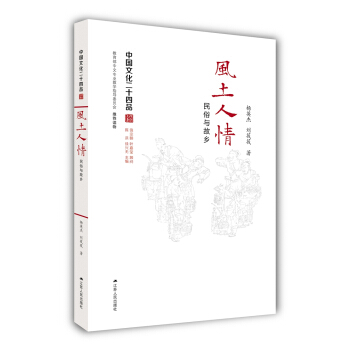
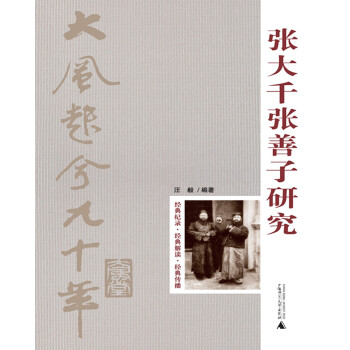
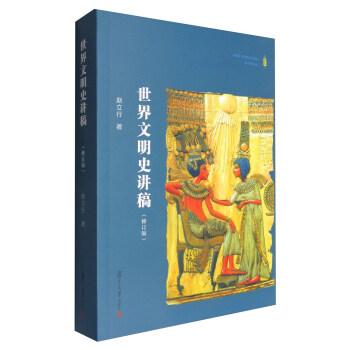
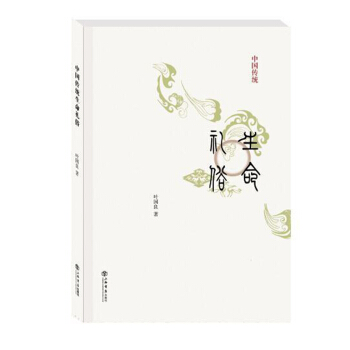
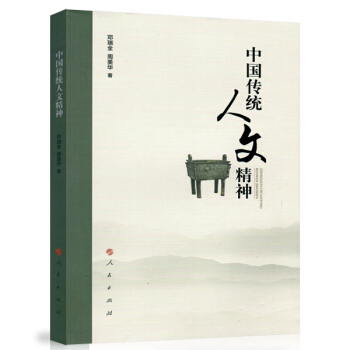
![體驗世界文化之旅閱讀文庫:德國 [Germany-Culture Smart!] pdf epub mobi 電子書 下載](https://pic.windowsfront.com/12159442/58d87e53N0747681d.jpg)
![體驗世界文化之旅閱讀文庫:亞美尼亞 [Armenia-Culture Smart!] pdf epub mobi 電子書 下載](https://pic.windowsfront.com/12159452/58d87e53Nb37c42a3.jpg)
